Tracing Posthuman Cannibalism: Animality and the Animal/Human Boundary in The Texas Chain Saw Massacre Movies
Ece Üçoluk Krane
In this article I will consider insights emerging from the field of Animal Studies in relation to a selection of films in The Texas Chain Saw Massacre (hereafter TCSM) franchise. By paying close attention to the construction of the animal subject and the human-animal relation in the TCSM franchise, I will argue that the original 1974 film, The Texas Chain Saw Massacre II (1986) and the 2003 reboot The Texas Chain Saw Massacre all transgress the human-animal boundary in order to critique “carnism.”[1] As such, these films exemplify “posthuman cannibalism,” which I define as a trope that transgresses the human-nonhuman boundary to undermine speciesism and anthropocentrism. In contrast, the most recent installment in the TCSM franchise Leatherface (2017) paradoxically disrupts the human-animal boundary only to re-establish it, thereby diverging from the earlier films’ critiques of carnism.
For Communication scholar and animal advocate Carrie Packwood Freeman, the human/animal duality lying at the heart of speciesism is something humans have created in their own minds.[2] That is, we humans typically do not consider ourselves animals, even though we may acknowledge evolution as a factual account of human development. Freeman proposes that we begin to transform this hegemonic mindset by creating language that would help humans rhetorically reconstruct themselves as animals. Specifically, she calls for the replacement of the term “human” with “humanimal” and the term “animal” with “nonhuman animal.”[3] The advantage of Freeman’s terms is that instead of being mutually exclusive, they are mutually inclusive terms that foreground commonalities between humans and animals instead of differences. Both of her terms place humans in the broad category of animals, reminding us that we too are animals.[4] This new rhetoric aims to propel people to envision themselves as part of a larger ecological community alongside animals, to see animals as equals rather than inferiors, and to instigate action against animal abuse.
Analyzed within this framework, the visual rhetoric of TCSM (1974) mirrors Freeman’s rhetorical strategy. The movie blurs the animal-human boundary that, as Freeman argues, creates human domination of animals and “constrains and impedes an average person’s consideration of animal rights as a valid ethical position.”[5] TCSM (1974) tells the story of a group of teenagers who travel through a rural area of Texas and end up falling prey to a family of cannibals. All but one group member (Sally, played by Marilyn Burns) are brutally killed after having been subjected to the violent and often sadistic practices of a cannibal family comprised of former slaughterhouse workers. In this way, the film places its human victim characters in the position of farm animals. The inversion of human predators becoming human prey works to associate and equate animal slaughter with human slaughter, and to associate carnism with cannibalism, all for the purpose of provoking empathy and compassion for actual farm animals through the audience’s identification with characters that go through extreme pain, stress and trauma—most of them finally being killed in order to be consumed by other humans.
Most previous scholars have discussed TCSM (1974) as a socio-cultural critique of humans’ relation to the human other without addressing the animal other.[6] Yet several scenes in TCSM (1974) clearly equate animals and humans, both aurally and visually. For instance, the façade of the room where the film’s iconic cannibal Leatherface slaughters his human prey is decorated with the skulls and other bones of animals. The steel door and the planked ramp in front of this room resemble those used in slaughterhouses. Leatherface resembles a butcher with his blood-stained black apron. He uses a mallet to knock down people, a tool that the film’s characters previously discussed as being used in slaughterhouses to knock down cattle. Similarly, the room one soon-to-be victim checks while looking for her friend contains a mixture of animal and human remains, including the skulls, other bones, and skins of human and animals, as well as bird feathers.
In addition to the visual rhetoric, sound cues associate cannibalism and carnism to produce the conception of the two being the same or analogous. When Leatherface knocks down a victim with the mallet, a non-diegetic sound of a pig squealing dubbed over this image recalls pigs brutally killed in slaughterhouses. This sound repeats when Leatherface later cuts that same victim into pieces as another, still living victim looks on helplessly as she hangs impaled on a meat hook, like some still-living side of beef.
It is not only the consumption of animals for meat that the original TCSM calls into question, but all sorts of other end products made from animals. As a soon-to-be victim searches the cannibal family’s home for her missing friend, she enters a living room and abruptly trips, falling onto a floor covered with a thick layer of feathers and down that recalls the way birds are plucked alive for the production of comforters, jackets and pillows. As she looks up from the floor, she is then confronted by the shocking image of a couch made of human bones and skin (see figure 1). This inversion of an actual leather couch works to estrange the audience from a taken-for-granted cultural norm—the use of animal bodies for human furniture—by crossing the animal-human boundary.
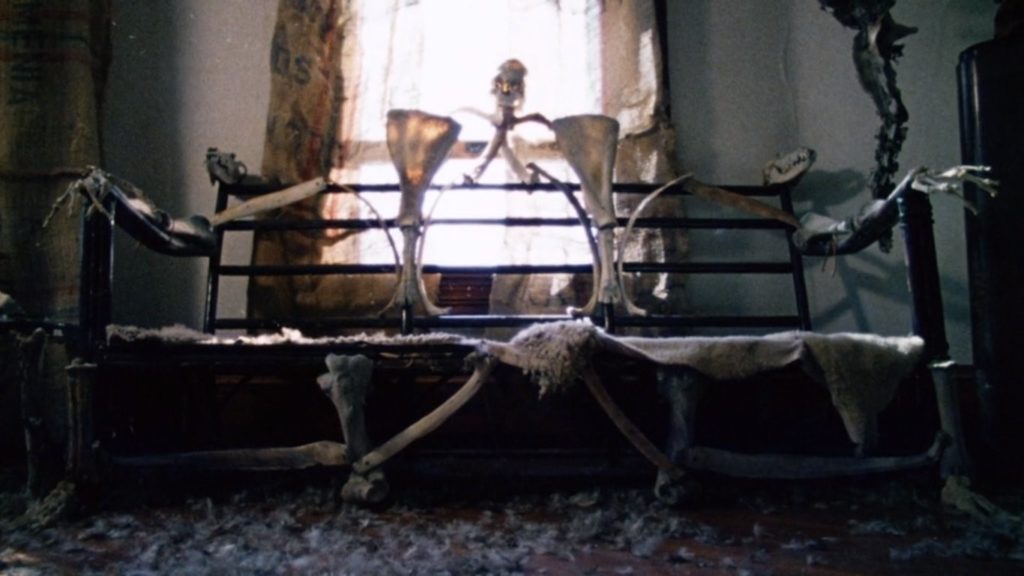
FIGURE 1. Cannibal’s living room (Texas Chain Saw Massacre, Tobe Hooper, 1974)
Film scholar Jason Middleton argues that the force of indexical imagery of animals that are either dead or soon to be dead (for example, roadkill armadillo, penned cattle awaiting slaughter) lends a documentary feel to TCSM (1974) and confronts viewers with issues of animal slaughter, meat and animal abuse. However, Middleton claims the movie “offers no possibility for resolution” or “means of working through these contradictions.” Citing Robin Wood, Middleton adds that these images “contribute instead to the film’s larger sense that Wood describes as ‘a civilization condemning itself, through its popular culture, to ultimate disintegration, and ambivalently…celebrating the fact.’” He concludes that the film’s “goals are certainly not instrumental and proselytizing in the manner of Earthlings,” a 2005 documentary that exposes animal suffering in factory farms, puppy mills, pet stores, and scientific labs.[7] But nothing could be further from the truth. By associating carnism with cannibalism, TCSM (1974) attempts to alter the spectator’s perception of meat from something appetizing to something repulsive in order to encourage viewers to reject carnism.
In explaining why we react differently to different types of meat–such as being disgusted by the thought of eating a dog but having our appetites aroused at the thought of eating beef–psychologist Melanie Joy explains that our adverse emotional reaction to different types of meat is due to our different perceptions of them, not due to a physical difference between the two types of meat.[8] “Such a shift in perception,” she says, “can feel like a shift in lanes on a two-lane road: crossing the yellow line radically alters our experience.” She adds that “The reason we can have such a powerful response to a shift in perception is because our perceptions determine, in large part, our reality; how we perceive a situation—the meaning we make of it—determines what we think and how we feel about it. In turn, our thoughts and feelings often determine how we will act.”[9]
The film’s disposition to transform humans’ feelings toward meat from craving to disgust is exemplified in the scene where Sally takes refuge in the gas station as she’s pursued by Leatherface. While she waits for the owner of the gas station to return, Sally’s eyes (and our eyes from her point of view) are drawn to the open door of the cooking chamber of the gas station’s brick smoker, in which a variety of meat is cooking as it hangs from metal hooks. Earlier in the movie, the gas station owner (who turns out to be the father of the cannibal family) had offered the group of young travelers barbecue, and the meat then had an appetizing appeal. However, Sally’s terrified expression and frantic whimpering are now interspersed with the image of cooking meat. This cues the spectator to understand the meat as an object of fear, but we are not quite sure why until a reverse shot reveals the meat again, this time in extreme close-up. We continue to scan the meat from Sally’s POV as the camera slowly pans left, but now, in extreme close-up, we can no longer identify the particular creature from whose flesh the meat originated. Any semblance of an organism’s original form has been lost.
The camera, lingering on this imagery as the sound of Sally’s terrified whimpering escalates, compels us to question the contents of the smoker for the first time and raises the suspicion that they may include human meat. This cognitive realization contaminates the culturally and narratively coded, mouth-watering appeal of a barbecue display, thereby shifting our perception of it to a repulsive object, even though nothing physically has changed about the barbecue meat itself. In other words, just like Joy’s mental exercise that replaces beef with dog meat, TCSM (1974) conceptually contaminates animal meat by associating it with human meat in an attempt to evoke repulsion toward carnism.
The abstraction of the barbecue display also recalls the movie’s opening credit sequence visually and aurally. This sequence begins with a fixed shot of unidentifiable red patches against a black backdrop. The camera then begins to pan left and zoom in. Next, the shot cuts to amorphous red shapes fluidly spreading across the frame against another black backdrop. Accompanying these visuals, we hear a radio news broadcast, reporting incidents of humans digging up and dismembering human corpses and inflicting violence on other humans. At the same time, we hear an ominous musical score and a subtle sizzling sound. Likewise, the barbecue display scene presents us with images of shadowy pieces of meat, illuminated red by the cooking heat source, and rendered amorphous by being shown in extreme close-up as the camera pans left over them. As we see the meat like this, we hear another grisly news broadcast from the same reporter playing on a radio at the gas station, and, at the same time, the sizzling sound coming from the barbecue display.
Thanks to the barbecue display scene’s visual and aural associations with the opening credit sequence, the collapse of boundaries between human and animal to which the latter scene alludes reflects back upon the opening credit sequence. In light of the barbecue scene, the unidentifiable and fluid red shapes of the opening credit sequence may now be understood as abstractions of unidentified meat whose viscosity suggests fluidity across forms, boundaries, and species. That is, these formless patches of red in motion are abstractions of a common flesh, wherein human and animal are no longer separately conceived. Just as Freeman’s “humanimal” topples the human-animal dichotomy by naming humans as a type of animal and therefore placing human and nonhuman animals on more even ground, TCSM (1974) does the same thing by presenting flesh that can be consumed as meat as a common denominator between humans and animals. In other words, just as humans are a type of animal, like animals, humans can also be conceived of as a type of meat. Hence, TCSM (1974) creates a cinematic equivalent to Freeman’s discussion of the term “humanimal.”
Texas Chain Saw Massacre II (1986)
The strategy of collapsing the human-animal boundary by reconfiguring meat as a common denominator between humans and animals can also be found in the TCSM franchise’s second film, Texas Chains Saw Massacre II (1986). Drayton Sawyer (Jim Siedow), the cannibal father from the first film, wins the Texas Oklahoma Chili cook-off contest grand prize. When the hostess invites him to the stage to receive his award and asks the secret to his fabulously tasty chili, Sawyer replies to the cheering and avid crowd, “No secret. It’s the meat. Don’t skimp on the meat. I got a real good eye for prime meat. Runs in the family.” Unlike the cook-off crowd, we, the privileged spectator, know to what kind of meat Sawyer refers. Yet in addition to being a source of dark humor, this knowledge causes us conceptually to imbricate animal meat and human meat when we see Sawyer’s chili, in much the same way we might have when we saw the barbecue display in TCSM (1974). While this imbrication turns the chili into a repulsive object for us, the onscreen crowd’s continued enthusiasm for the chili underscores our now altered, unconventional, perception of meat. The interspecies remains in the cook-off setting (from the cow skulls placed on the contestant platform to the human bone found in Sawyer’s chili that he passes off as peppercorn) and later in the film, a human body being roasted on a spit like a pig in the cannibal family’s cavernous underground lair, all further tease the human-animal boundary in ways analogous to the 1974 film’s barbecue display.
The Texas Chain Saw Massacre (2003)
A typical feature of TCSM movies is a female victim-hero figure that Carol Clover dubbed the final girl,[10] who is the last survivor to fight the singular or primary killer. The final girls of the TCSM franchise—including Sally (1974), Stretch (1986), Michelle (1990), Jenny (1994), and Erin (2003)— are variations of each other and all play a similar role in the narrative. Like her predecessors, Erin in the 2003 movie (Jessica Biel) runs away from Leatherface and the family of cannibals. However, whereas the franchise’s previous final girls took flight from their cannibal assailants in fields, forests, an abandoned house, and a cannibal family’s elaborate underground lair, Erin hides in a slaughterhouse which is still operational, but not occupied by workers at the time. In this way, Erin is placed, both literally and figuratively, in the position of a farm animal to be slaughtered for mass consumption. While in the slaughterhouse, she passes through the same stages that a farm animal would: from the line-up gate, through the conveyor belt, and into the freezer. The camera seems tethered to Erin as she undergoes this process, inviting us to align ourselves with her and, by extension, with the animals in whose position she has been placed. Furthermore, with the camera placed low to the floor as it tracks Erin, we view Erin from an animal-like, and certainly nonhuman POV, even though she is not being followed by animals at this time (See figure 2).
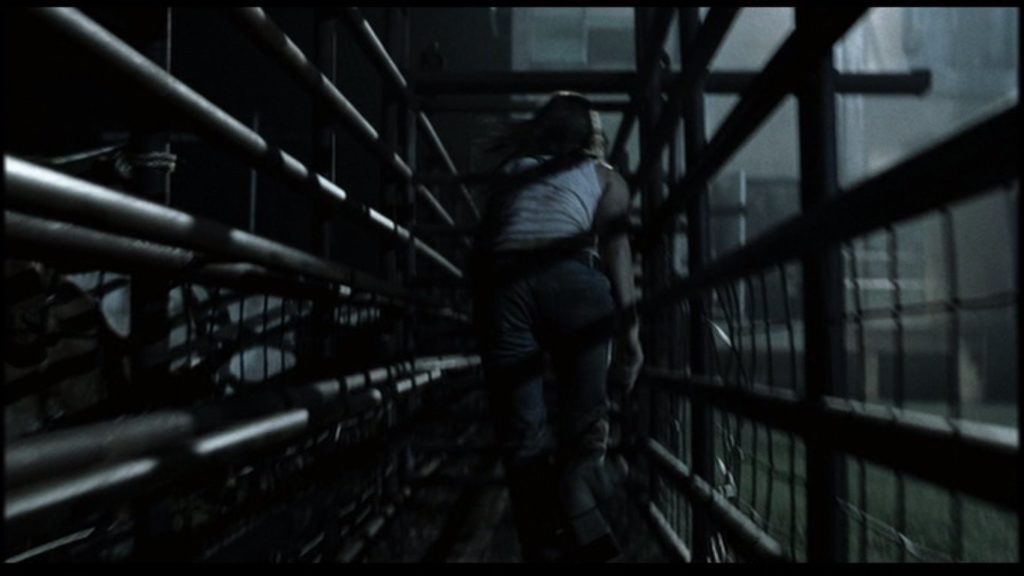
FIGURE 2. Erin entering the slaughterhouse (The Texas Chain Saw Massacre, Marcus Nispel, 2003)
Furthermore, as Erin tries to escape Leatherface, her gaze meets those of her animal counterparts: pigs in pens, whose fate Erin is now sharing. The reciprocal glances between Erin and the pigs underscores the identical positioning of human and animal victims within this human establishment and prompts the viewer to recognize the horrific position in which humans actually place farm animals.
Yet perhaps no single scene in the slaughterhouse sequence more effectively solidifies this human-animal identification than when Erin, chased by Leatherface, grabs a butcher’s knife and takes refuge in a locker in the slaughterhouse works’ changing room. She then makes a noise on purpose to attract him towards her. As the killer opens one locker door after another in search of her, the camera repeatedly aligns us with Erin by being positioned right beside her in the closet, locking our sight to her terrified face as her eyes follow Leatherface through the locker’s vent slots. Due to these disorienting cues, even though we are aligned with Erin, we have no idea which locker she is in. Then a locker-door rattles. We anticipate it may be the door to her locker as Leatherface opens that particular closet door, but instead he encounters a living pig hiding inside. The next shot shows us Leatherface from the pig’s point of view, as he stands over us with his chain saw, ready to kill (see figure 3).
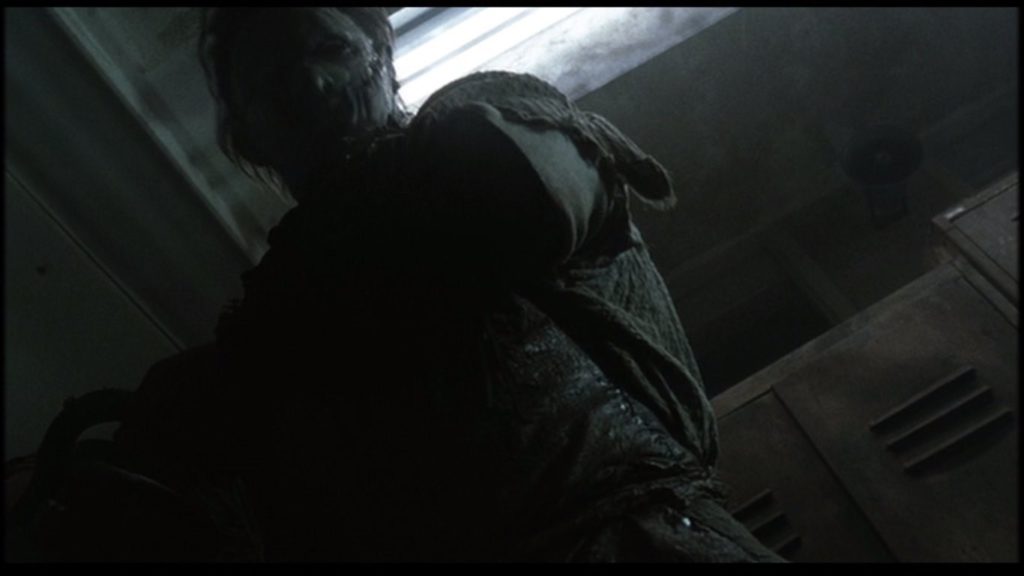
FIGURE 3. The Pig’s POV (The Texas Chain Saw Massacre, Marcus Nispel, 2003)
Thus, we suddenly find ourselves facing the butcher, not from the position of Erin as a proxy for farm animals led to slaughter, but directly, now, from the vantage point of a literal farm animal in an actual slaughterhouse. This positioning parallels the cross-gender identification phenomenon that Carol Clover points to in slasher movies, where the largely male audience is invited to identify with the final girl, thereby tapping into the male audience’s sadomasochistic pleasures.[11] However the difference here is that the audience is compelled to identify with an animal rather than with another human – regardless of gender. What takes place is an interspecies identification where the spectator is human and animal at the same time. This species fluidity that animalizes the human manifests yet another effective visual representation of humanimality that Freeman advocates as a means of animal advocacy. Furthermore, while this scene’s interspecies identification is intended to evoke fear and compassion, inviting us to reconsider the slaughter of animals, the nonhuman perspective also reconceptualizes the human as prey, a position we have long since forgotten, having taken mastery over the food chain. In that sense, this shot also has the power to remind us of our animal origins by evoking the dread of being preyed upon.
Yet, even more importantly, the nonhuman point of view attempts to shatter the image we humans have of ourselves. It functions like a mirror as we are stalked by, and ultimately confronted with, a horrifying reflection of ourselves. As we take on the role of farm animals, we come to see ourselves as Leatherface, a collective representation of humans’ abuse, murder, and consumption of animals. Thus, the image renders visible both sides of animal violence: the animal victim of oppression and the human perpetrators in the meat industry – both of whom purposefully have been hidden from the sight and language of our carnistic culture.
Posthumanist to Humanist Imaginings: Leatherface (2017)
So far, I have traced a strong posthumanist undercurrent in the 1974, 1986 and 2003 installments of the Texas Chain Saw Massacre franchise that functions as a critique of carnism. I will now turn to the recent reboot of the series – Leatherface (2017), a prequel to the events of the original 1974 film – to show how this latest installment differs substantially from its predecessors in the way it constructs the animal subject and the human-animal relation.
In 1955, Betty (Lorina Kamburova) and Ted (Julian Kostov), are driving through Texas when they almost hit what appears to be some kind of animal. Betty gets out of the car to investigate, trying to make out the apparent animal’s form in the distance. Suddenly, the creature stands up on two legs as it sheds what appears to be an animal carcass, thereby revealing the body of a human child – albeit a child whose face is completely covered by a severed cow’s head (complete with fatal bolt wound to its forehead) that the child wears as a mask (see figure 4).
The way the movie delivers this moment—the sudden cut to a medium close up, increased ominous sound effect for shock, and Betty’s startled, loud gasp—all code this animal-headed figure as uncanny and monstrous. Even though we know there is a child’s face inside the cow head mask, the figure no longer connotes a human, but an animal-headed beast. Such is how the movie’s most crucial scene codes the animal in its entry – not as a subject we should sympathize with and fear for, but rather a source of antagonism of which we should be afraid: a terrifying beast. Even though human and animal physically merge in this visual figure, the human-animal boundary is re-erected on a conceptual level through the depiction of animal as the beast, the other of human. Hence, the image diverges from posthumanism and re-establishes the humanist dichotomy between human and animal.
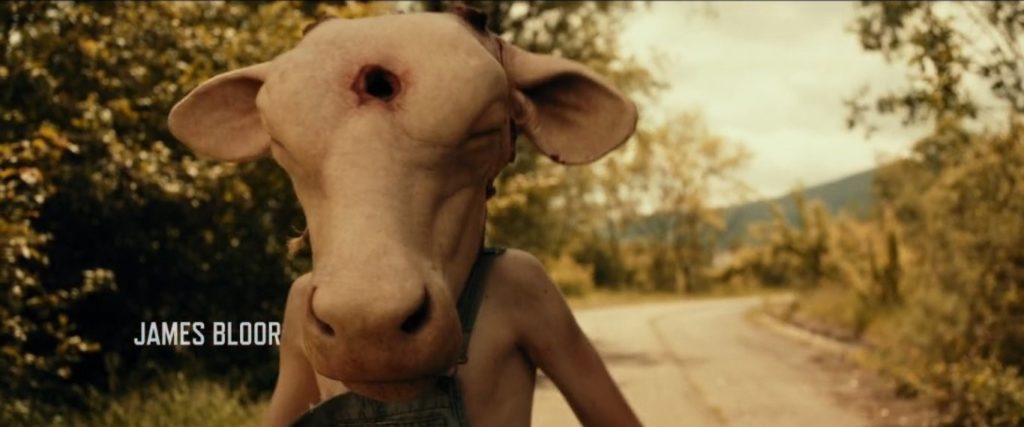
FIGURE 4. Animal-headed figure (Leatherface, Alexandre Bustillo and Julien Maury, 2017)
This is not the first time we encounter a severed head of an animal in a TCSM movie. In the 2003 film, characters encounter severed heads of farm animals on three different occasions (see figures 5, 6 & 7). First, as a vanload of young travelers passes the Blair Meat Cooperation (the slaughterhouse we first encounter in the 2003 film), the camera lingers on a trash can in the foreground full of severed cow heads. The placement of severed heads against the backdrop of a slaughterhouse not only associates the severed heads with the meat industry, the camera’s trajectory—from the van, past the façade of the slaughterhouse to the trashcan— links victims of carnism (animals) to future victims of cannibalism (passengers). Next, in a diner, the attention of the character Morgan (Jonathan Tucker) is drawn to a refrigerator window display of various meats, with a severed pig’s head as its centerpiece. Here again, not only does the decor clearly relate the severed pig’s head to the culinary practice of carnism, but Morgan is framed to appear as though he is inside the refrigerator among the dismembered animal parts, something which foreshadows human victimization for meat in a way analogous to that of animal victimization for meat. Finally, this visual tactic is repeated during Erin’s slaughterhouse chase sequence, when she is framed close to severed cow heads drenched in blood.
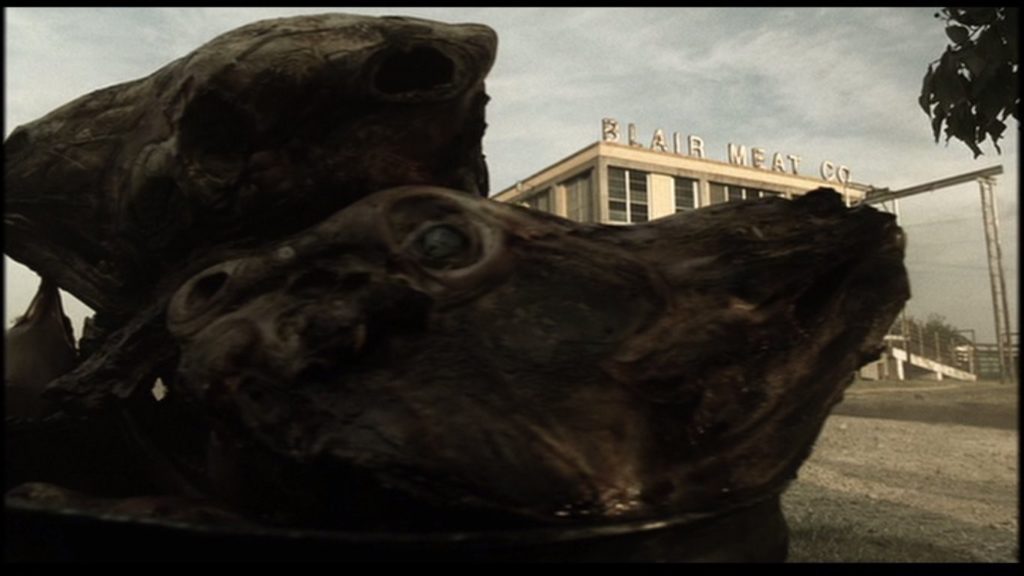
FIGURE 5. Cow heads in a trash can (The Texas Chain Saw Massacre, Marcus Nispel, 2003)
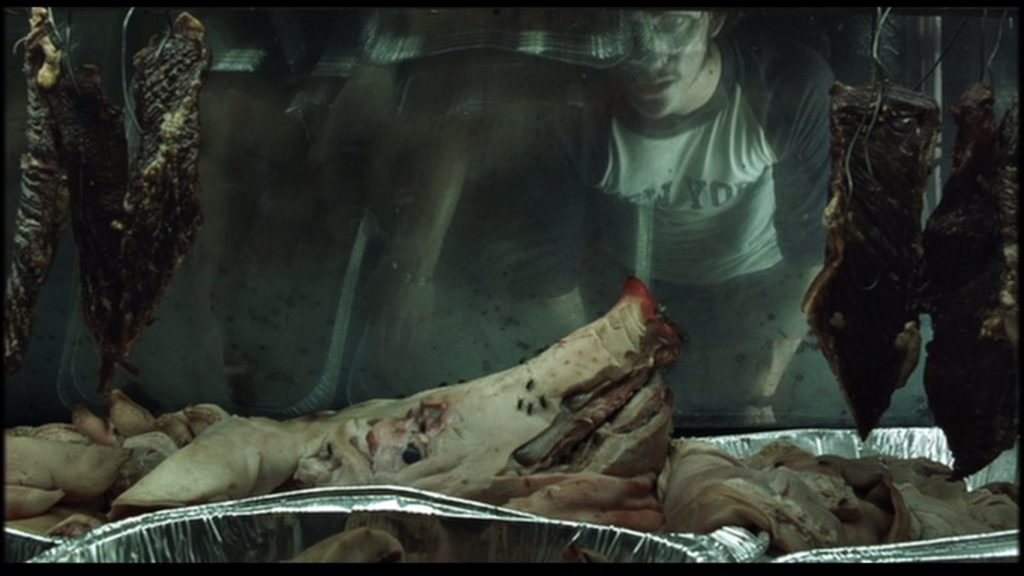
FIGURE 6. A pig’s head in the diner’s refrigerator (The Texas Chain Saw Massacre, Marcus Nispel, 2003)
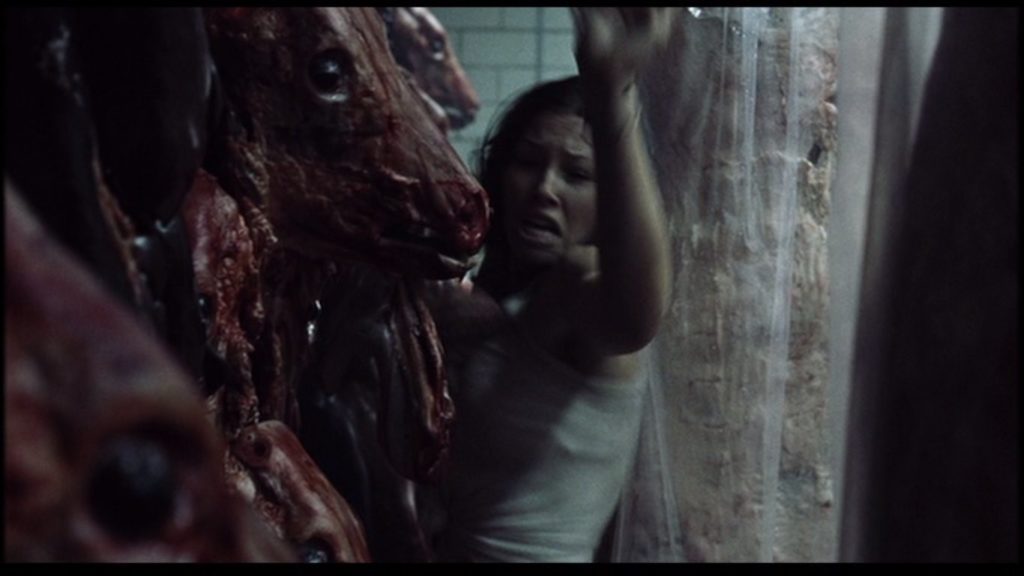
FIGURE 7. Cow heads in the freezer (The Texas Chain Saw Massacre, Marcus Nispel, 2003)
In the 2003 film, the decapitated farm animal heads signal animal victimization in the meat industry. In contrast, Leatherface utilizes the severed animal head to code the animal as a terrifying beast and nonhuman other in opposition to humans, instead of another victim of human cruelty alongside human victims. At this point a critical reader may point out the wound on Leatherface’s beast-like figure’s forehead, which appears to be from a penetrating bolt gun (a tool used to slaughter cattle) and claim this wound conveys the movie’s critical outlook on farm animal slaughter. But because most spectators are unaware of exactly how livestock are killed before they are processed into meat, this wound only adds to the image’s horror simply because it is gory without drawing critical attention to carnism. The severed animal head is prone to such out-of-trajectory readings especially because, unlike the severed animal heads of the 2003 film, it is removed from such settings as slaughterhouses and restaurants that would reveal the cause or purpose of the animal’s death.
Not only does Leatherface eschew showing farm animals as victims of carnism, it also turns them into ferocious brutes. In two occasions the cannibal Sawyer family feeds humans to pigs. In the first instance, pigs tear a live human into pieces and eat him alive. Next, cannibals feed pigs the remains of a dead human. Even though in actuality it is humans who consume pigs on a daily basis, on both these occasions pigs operate almost like biological disposal units whose existence turns solely on tearing flesh, grinding and devouring. On the one hand, this violent and consumptive depiction of the animal challenges the dominance of humans as it reminds us of the animality of our human ancestors’ lives, when humans were preyed upon by other animals.[12] But, on the other hand, it widens the conceptual gap between humans and animals by turning pigs—victims of human violence, exploitation and oppression—into violent, malicious others, something which paradoxically counteracts the scene’s aforementioned posthumanist capacity to decenter humans. Such constructions of animals conform to Michael Lundblad’s concept of “animalizing animals,” in which animals “are seen as driven essentially, if not exclusively, by instincts for violence.”[13] Thus Leatherface’s depiction of pigs stands in sharp contrast to the depictions of farm animals in the 1974 and 2003 TCSM films and the actual behavior of pigs.[14]
The farm animals in Leatherface are extensions and accomplices of cannibals; like their owners they are violent, rapacious creatures towards humans. Cannibals feeding and petting the pigs as they consume crime evidence not only suggests a symbiotic but also a pet-owner relationship. This association of farm animals with companion animals doesn’t help advance the rights of farm animals and, if anything, works against such advocacy. When talking about strategic ways to combat speciesism, Freeman argues that while the association of devalued animals (such as farm animals) with valued companion animals is often used in an attempt to improve the treatment of traditionally devalued animals, this approach is not an “effective strategy for transforming the discriminatory worldviews about animals as ‘other’.”[15] Yet Leatherface’s association of farm and companion animals actually furthers the discriminatory view toward farm animals by constructing them as cannibal-companion villains. This intensifies Leatherface’s humanist vision of animals, reinforcing the conceptual separation of humans from devalued animals, in this case pigs.
Again, Freeman’s central concern is humans’ misconception of themselves as something other than animals, a conception that lies at the heart of speciesism. To change this misconception for the benefit of animals she suggests that humans should embrace their own animality by acknowledging their similarity to animals and thereby gain more respect for animals. Freeman does not go into detail about what exactly this animality would entail, or about what specific aspects of animality she has in mind, but presumably she is referring to constructive and positive aspects of our animality. Leatherface complicates Freeman’s concept as characters do embrace their animality but in a way that is highly destructive and violent. To make these matters even more complex, some characters embrace such animality in a warranted way to break free from individual or institutionalized oppression and violence.
One such example has to do with the mental institution to which Jed (later called by the name Jackson) is committed. There, the clinically logical institution head, Doctor Lang (Christopher Adamson), turns out to be as cruel as the Sawyer family as he tortures teenage patients under the guise of science and rehabilitation. Although Jackson’s mother Verna has hired an attorney and obtained a court injunction allowing her to visit Jackson, Dr. Lang still refuses to let her see her son. Not being able to see Jackson through legal (i.e. civil, rational and therefore human) means, she resorts to physically attacking a nurse in order to break into the facility to see her son, thereby unleashing her previously restrained animality. In this process, she inadvertently causes a riot, leading to a swarm of patients breaking free from their cells. Many nurses and patients die during the riot, and Bud, previously the most calm, naive and quiet patient we encounter, finds his torturer, Dr. Lang, and brutally murders him. In this way Leatherface employs destructive animality as a rightful way for gaining personal and collective emancipation from exploitative and oppressive authority figures and institutions.
This destructive animality, which is constructed in a somewhat positive sense as something that relatively sympathetic characters embrace in order to oppose cruelty, is pitted against its negative construction, as an unwarranted act that villainous characters engage in principally for the execution of cruelty. This second type of animality is embodied by villainous characters Ike (James Bloor) and Clarice (Jessica Madsen), a crazed couple who break free from the same mental institution. Violent, erratic, instinctively driven and unreliable, they are the equivalent of Lundblad’s animalized animals. Devoid of social etiquette and morality, they abduct, harass and murder, publicly engage in sexual intercourse, and even sexually molest a corpse. This type of animality is not justified. This is why when Bud finally embraces destructive animality to end the life of his second abuser, Ike (who has been exercising animality on him in a negative sense), we side with Bud instead of with Ike. Jackson, on the other hand, after witnessing Bud being killed and having his own face disfigured by a policeman’s bullet—which, on top of a lifetime of suffering cruelty, leads him to embrace his own animality as rage—crosses over into negative animality by murdering Elizabeth (Vanessa Grasse). Yet whether this destructive animality is positive or negative, the film always presents animality as the opposite of being human. To embrace animality is to turn away from one’s humanity. This is why Jackson, having already stopped speaking (a feature unique to humans), decapitates Elizabeth: to sever his tie to the last person who reminds him of his human self (compassion, conscience, humanity).
Through such nuanced and polarized variations on humans’ justified or unjustified violence, Leatherface limits humans’ supposed animality to destructive animality. While such a construction of animality certainly addresses the social forces that cause humans’ abuse of humans, it elides our systemic abuse of animals. Thus, Leatherface utilizes animals and animality to narrate the story of humans, while TCSM (1974), TCSM (1986) and TCSM (2003) deploy the human as a vehicle for revealing the story of animals in the meat industry.
While such sympathetic and unsympathetic characters’ violent behavior approximates that of their animal counterparts (the ferocious pigs) and transgresses the animal-human boundary, this behavior paradoxically re-inscribes the animal-human boundary by equating such animality with humanity’s death, harm and destruction. Even though Leatherface exemplifies humans’ embracing their own animality, animality constructed in such a limited, destructive way does not help evoke human sympathy for animals. The film’s dominant humanist tendency is strained somewhat in the scene in which, in Seemburst’s Barbecue, Ike and Clarice casually open fire on several innocent human beings. In the next scene the camera pans from a “Nice to meat you” sign erected outside the barbecue restaurant. Then the film cuts to the restaurant interior where the camera slowly tracks a pool of blood leading to a dead body on the floor as a faint, non-diegetic sound of a cow mooing is heard. All of this works to associate animal and human slaughter. However, because the sound of the cow is barely audible and hard to distinguish from the ominous tone of the musical score playing at the same time, the potential effectiveness of this human-animal association is undermined and can easily be missed by the spectator. Moreover, even though this particular scene does transgress the human-animal boundary in favor of animals, the overall tendency of the movie contradicts this posthumanist moment, making it the exception rather than the rule.
Conclusion
By means of substitution, imbrication, inversion and cross-species identification, the 1974, 1986 and 2003 installments of the TCSM franchise all transgress the human-animal boundary by imagining humans as a type of animal whose bodies, like those of animals, are degraded into meat. Like Freeman’s notion of humanimality, this evocation of human animalization aims to evoke empathy and compassion for slaughter animals and repulsion towards meat in order to combat speciesism and carnism. However, the final film, to date, in the franchise, Leatherface (2017), deviates from this posthumanist undercurrent by regressively falling back on horror’s general tendency to construct animal as human’s malicious other. Furthermore, the 2017 film depicts destruction and violence as the only common denominator between humans and animals, thereby portraying animals in an unsympathetic light. The omission of any substantial association between carnism and cannibalism, which was a staple element of the original film and the two other previous installments, further attests to the latest installment’s humanist inclinations.
Ece Üçoluk Krane is a PhD candidate in the school of Film, Media and Theatre at Georgia State University. Her dissertation project investigates posthuman cannibalism in cinema, combining feminist, cognitive and animal studies approaches.
Notes
[1] For Melanie Joy, carnism is a term that describes the invisible belief system in which we live, one that normalizes the eating of animals. A carnist is not the same as a carnivore. A carnivore is an animal that must eat meat to survive, whereas a carnist—a human who eats meat—eats meat out of choice, not necessity (28-33). See Why We Love Dogs, Eat Pigs, and Wear Cows: An Introduction to Carnism (San Francisco: Conari Press, 2011).
[2] Carrie Packwood Freeman, “Embracing Humanimality: Deconstructing the Human/Animal Dichotomy,” in Arguments about Animal Ethics, eds. Greg Goodale and Jason Edward Black (Lanham: Lexington Books, 2010), 11. As a side note “speciesism” is, as Peter Singer notes “a prejudice or attitude of bias in favor of the interests of members of one’s own species and against those of members of other species.” Animal Liberation (NY: Harper Collins Publishers, 2002), 6.
[3] Freeman, “Embracing Humanimality,” 11. Humanimal is a term previously used by William J.T. Mitchell in his foreword to Cary Wolfe’s book Animal Rites: American Culture, The discourse of Species and Posthumanist Theory (Chicago: University of Chicago Press, 2003).
[4] Freeman, “Embracing Humanimality,” 14.
[5] Freeman, “Embracing Humanimality,” 11.
[6] See for instance Robin Wood, “An Introduction to the American Horror Film,” in Movies and Methods: Vol. II: An Anthology, ed. Bill Nichols (Berkeley: University of California Press, 1985); Cynthia Baron, Diane Carson and Mark Bernard, Appetites and Anxieties: Food, Film, and the Politics of Representation (Detroit: Wayne State University Press, 2014), 129-152; Mikita Brottman, Offensive Films Toward an Anthropology of Cinema Vomitif (Westport: Greenwood Press, 1997), 107-126.
[7] Jason Middleton, “Indexical Violence, Transmodal Horror,” Invisible Culture, https://ivc.lib.rochester.edu/indexical-violence-transmodal-horror/.
[8] Joy, Why We Love Dogs, 12.
[9] Joy, Why We Love Dogs, 12-13.
[10] Carol Clover, Men, Women, and Chain Saws: Gender in the Modern Horror Film (Princeton: Princeton University Press, 2015), 260.
[11] Clover, Men, Women, and Chain Saws.
[12] Katarina Gregersdotter, et al. Animal Horror Cinema: Genre, History and Criticism (Palgrave Macmillan, 2018), 5.
[13] Michael Lundblad, The Birth of a Jungle: Animality in Progressive-Era U.S. Literature and Culture (New York: Oxford University Press, 2013), 11.
[14] Joy notes that pigs are intelligent, sensitive, affectionate and sociable creatures. They are considered to be more intelligent than dogs. For further discussion, see Why We Love Dogs, 23-47.
[15] Freeman, “Embracing Humanimality,” 12.
